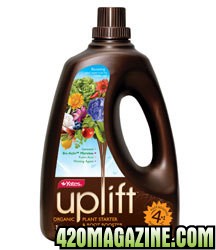Outragedpluto
New Member
You are still going to feed them eventually. The soil will only have about a months worth of nutes. Just be sure to buy organic ferts. I really like the fox farm line of products. Or even better would be to use bat guano and make tea out of it to feed them. But mj is a very hungry plant and when indoors they will use the nutes in the planter pretty quick. Good luck man and keep me posted!!!




 but on the brighter note they are some beautiful healthy looking clones!
but on the brighter note they are some beautiful healthy looking clones! 
 i wish you all the best bud! oh and they are some good looking pots, where did you pick them up from?
i wish you all the best bud! oh and they are some good looking pots, where did you pick them up from?